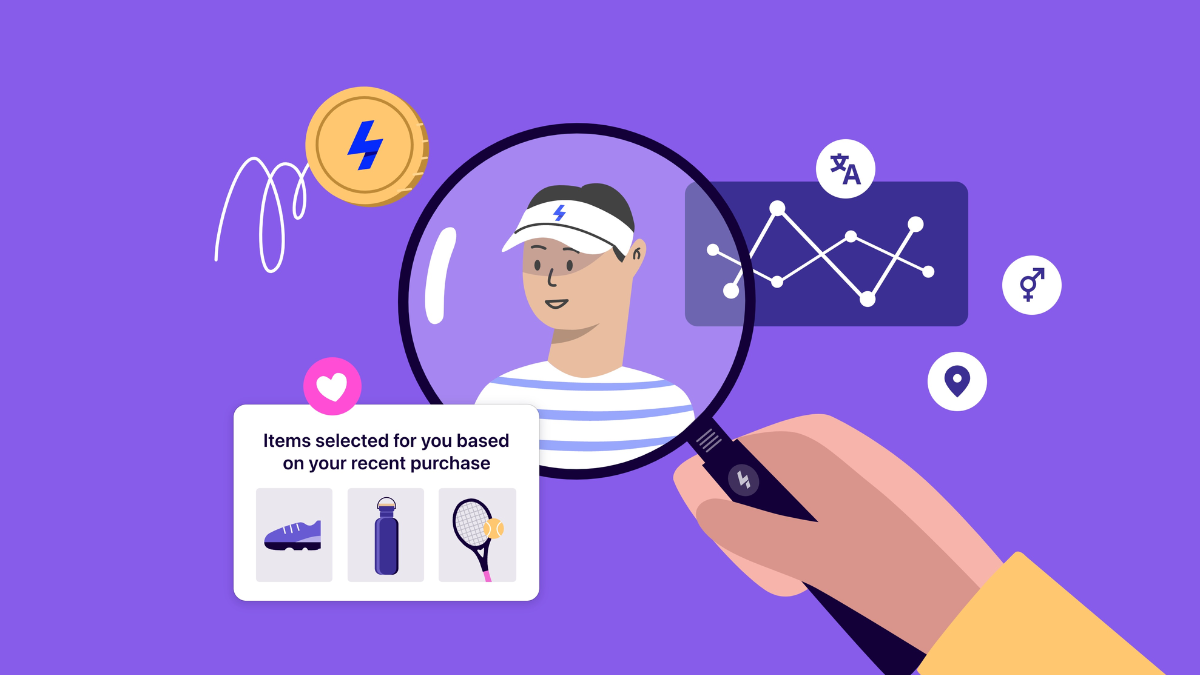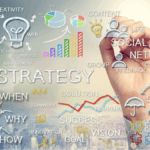In today’s hyper-competitive marketplace, understanding customer behavior, needs, and expectations is no longer optional—it’s a necessity. Top companies like Amazon, Apple, Netflix, and Google have set a high benchmark in customer-centricity by leveraging advanced tools, technologies, and strategies to gain deep insights into their customers. This article explores the methodologies, tools, and mindsets that leading businesses use to understand their customers and deliver tailored, seamless experiences.
Why Understanding Customers is Critical for Business Success
Understanding customers goes beyond knowing demographics. It involves anticipating their needs, predicting their behavior, and personalizing interactions. Companies that excel in this area see improvements in:
- Customer satisfaction
- Brand loyalty
- Revenue growth
- Retention and engagement
Tools Top Companies Use to Understand Their Customers
Customer Relationship Management (CRM) Systems
Top businesses use sophisticated CRM platforms such as Salesforce, HubSpot, and Zoho to manage customer data and interactions. These tools help businesses:
- Track customer journeys
- Monitor sales interactions
- Automate follow-ups
- Maintain customer history
CRMs centralize information to give a 360-degree view of the customer, enabling personalized communication and improved service.
Customer Data Platforms (CDPs)
CDPs like Segment or Treasure Data gather data from multiple touchpoints—website visits, app usage, email engagement, social media—and unify it under a single profile. Unlike CRMs, CDPs are optimized for real-time data and behavioral analytics, allowing companies to:
- Create detailed customer segments
- Target users with relevant messages
- Analyze multichannel behaviors
Analytics and Business Intelligence Tools
Big names like Google, Microsoft, and Meta use platforms such as Google Analytics, Tableau, Power BI, and Looker to dig deep into behavioral trends and sales funnels.
Key features include:
- Funnel analysis
- Cohort tracking
- Customer lifetime value analysis
- Conversion rate optimization
These tools convert raw data into actionable insights through intuitive dashboards and predictive analytics.
Artificial Intelligence and Machine Learning
AI and ML help companies understand and anticipate customer behavior at scale. Tech giants employ AI for:
- Personalized product recommendations (e.g., Amazon, Netflix)
- Dynamic pricing (e.g., airlines, ride-sharing apps)
- Chatbots for customer service
- Sentiment analysis from social media or reviews
Machine learning models constantly improve their accuracy by learning from new customer data.
Techniques and Strategies for Gaining Customer Insights
Voice of the Customer (VoC) Programs
Top companies prioritize VoC to understand pain points, desires, and brand perception. This includes:
- Surveys and feedback forms
- Net Promoter Score (NPS)
- Social listening
- In-app feedback
Brands like Apple use NPS surveys after every support interaction to measure satisfaction and optimize the customer experience.
Behavioral Segmentation
Understanding how customers interact with your brand helps improve targeting and personalization. Amazon, for instance, segments users based on:
- Purchase frequency
- Browsing habits
- Wishlist activity
This enables highly targeted marketing campaigns and improved product suggestions.Customer Journey Mapping
Customer journey mapping outlines every step a customer takes with your brand. Top companies use this to:
- Identify friction points
- Improve onboarding processes
- Optimize support workflows
By understanding the end-to-end journey, companies can deliver more seamless and efficient customer experiences.
Predictive Analytics
Predictive analytics leverages past data to forecast future actions. For example:
- Netflix predicts what a user will watch next
- Amazon anticipates product demand
- Spotify curates playlists based on user behavior
This leads to proactive personalization, increasing user engagement and satisfaction.
Real-World Examples of How Leading Brands Understand Their Customers
Amazon – Mastering Personalization
Amazon collects vast amounts of customer data through its platform. It uses:
- Purchase history
- Product reviews
- Clickstream data
With this, Amazon creates:
- Personalized homepages
- Smart recommendations
- Tailored emails
Their recommendation engine accounts for 35% of total sales, demonstrating the power of data-driven customer understanding.
Netflix – Content Optimization with Data
Netflix excels in customer insight by analyzing:
- Watch time
- Rewatch frequency
- Skip and pause behavior
This allows Netflix to:
- Personalize thumbnails
- Recommend shows
- Decide which content to fund
Their data-driven content strategy contributed to global hits like Stranger Things and Squid Game.
Starbucks – Loyalty and Location Data
Starbucks integrates:
- Mobile app usage
- Location data
- Purchase history
They use this to:
- Send timely promotions
- Customize rewards
- Offer location-based suggestions
This has helped Starbucks build one of the most successful loyalty programs in the world.
Apple – Customer-Centric Design
Apple emphasizes user experience through:
- Product simplicity
- Closed-loop feedback
- Continuous usability testing
Their physical stores are designed to observe customer interactions, informing future product design.
Psychological and Emotional Understanding
Sentiment Analysis
Using NLP (Natural Language Processing), companies analyze:
- Social media mentions
- Online reviews
- Chat transcripts
Sentiment analysis helps identify brand perception and emerging concerns in real time.
Empathy Mapping
Empathy maps help businesses step into the customer’s shoes by considering:
- What the customer thinks and feels
- What they see and hear
- Their pain points and goals
Design-thinking brands like IDEO and Google often use this approach to develop user-centric products.
Emerging Trends in Customer Understanding
Real-Time Personalization
Real-time engines now enable instant customization of content, pricing, and messaging. For instance:
- E-commerce platforms change homepage layout based on live behavior
- Travel sites update offers based on geo-location and time
Omnichannel Data Integration
Companies are investing in syncing customer data across:
- In-store visits
- Online interactions
- Social media
- Customer service
This creates a unified experience, allowing agents and algorithms alike to understand context and history.
Ethical Use of Data and Privacy
Top companies are now focusing on transparency, especially post-GDPR and CCPA regulations. Ethical practices include:
- First-party data collection
- Clear consent mechanisms
- Value exchange (rewards for data)
How Small Businesses Can Emulate These Strategies
Even without massive budgets, smaller businesses can:
Use Affordable CRMs
Platforms like Zoho CRM or HubSpot Free Tier help organize customer data effectively.
Collect Feedback Regularly
Free tools like Google Forms or Typeform can be used for surveys and VoC data.
Analyze Social Media Insights
Facebook, Instagram, and Twitter offer analytics that show which content performs well and why.
Segment and Personalize Emails
Email tools like Mailchimp and MailerLite allow behavior-based segmentation and automation, improving engagement without huge investment.
Conclusion
Top companies don’t just guess what customers want—they know it. By combining cutting-edge technologies like AI, CDPs, and analytics with strategic practices like journey mapping and empathy-driven design, they craft hyper-personalized experiences that foster loyalty and growth.
Whether you’re a global brand or a growing startup, adopting a customer-centric approach supported by the right tools and data can dramatically improve how you serve your audience. In the digital age, the businesses that win are the ones that understand their customers the best.
FAQs
Q1. What is the most commonly used tool by top companies to understand their customers?
Answer: CRM systems like Salesforce and HubSpot are widely used to manage and analyze customer interactions and data throughout the customer lifecycle.
Q2. How does Netflix personalize content for users?
Answer: Netflix analyzes user behavior like watch history, pause frequency, and rewatch patterns using machine learning algorithms to recommend personalized content.
Q3. What is the difference between a CRM and a CDP?
Answer: A CRM focuses on managing customer relationships and sales pipelines, while a CDP unifies data from various touchpoints to create comprehensive customer profiles for marketing and personalization.
Q4. Can small businesses use the same strategies as large companies?
Answer: Yes, many tools such as Google Analytics, Mailchimp, and Zoho CRM offer free or affordable versions that allow small businesses to understand and segment their customers effectively.
Q5. Why is customer journey mapping important?
Answer: Customer journey mapping helps identify pain points and opportunities for improvement in the customer experience, leading to higher satisfaction and loyalty.



